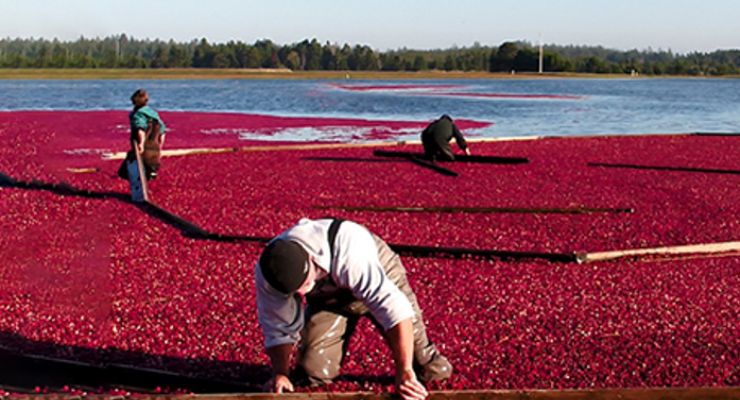04.02.24
Ethical Naturals Inc. (ENI), supplier of a cranberry extract standardized to A-type proanthocyanins (PACs) called Cranberex, reported that the 2024 cranberry harvest in Oregon U.S. is 17.5% higher than 2023. The year prior, the cranberry harvest had diminished by about 5.4%.
“2022 was a difficult year for supply of the highest-grade berries and key suppliers were running low on extracts by the end of 2023,” Cal Bewicke, CEO of ENI, said. “Though demand for the high-grade material continues to grow, we see more favorable pricing and supply through 2024 due to the robust harvest in Oregon.”
Oregon’s first commercial cranberry farm was established in 1885 in Coos County by a grower who migrated there from Massachusetts and brought cranberry cuttings with him. Coos and neighboring Curry County are where Oregon’s cranberry industry still thrives today.
Though Oregon only produces about 5% of the nation’s cranberry harvest, the bulk of which comes from Wisconsin and Massachusetts, the berries produced in Oregon have particular characteristics owing to the coast’s temperate climate and long growing season. According to ENI, citing the “American Herbal Pharmacopoeia and Therapeutic Compendium,” these conditions lead to a deeper red color and higher PAC content than what is grown in other states.
ENI has used Oregon cranberries for Cranberex extract for over 8 years, and recently produced a video, “From Field to Finished Product,” about the Oregon harvest, and the production of an extract standardized to A-type PACs. These types of PACs have been recognized as the unique class of constituents responsible for cranberry’s anti-adhesion activity as it applies to urinary tract health.
“2022 was a difficult year for supply of the highest-grade berries and key suppliers were running low on extracts by the end of 2023,” Cal Bewicke, CEO of ENI, said. “Though demand for the high-grade material continues to grow, we see more favorable pricing and supply through 2024 due to the robust harvest in Oregon.”
Oregon’s first commercial cranberry farm was established in 1885 in Coos County by a grower who migrated there from Massachusetts and brought cranberry cuttings with him. Coos and neighboring Curry County are where Oregon’s cranberry industry still thrives today.
Though Oregon only produces about 5% of the nation’s cranberry harvest, the bulk of which comes from Wisconsin and Massachusetts, the berries produced in Oregon have particular characteristics owing to the coast’s temperate climate and long growing season. According to ENI, citing the “American Herbal Pharmacopoeia and Therapeutic Compendium,” these conditions lead to a deeper red color and higher PAC content than what is grown in other states.
ENI has used Oregon cranberries for Cranberex extract for over 8 years, and recently produced a video, “From Field to Finished Product,” about the Oregon harvest, and the production of an extract standardized to A-type PACs. These types of PACs have been recognized as the unique class of constituents responsible for cranberry’s anti-adhesion activity as it applies to urinary tract health.




























